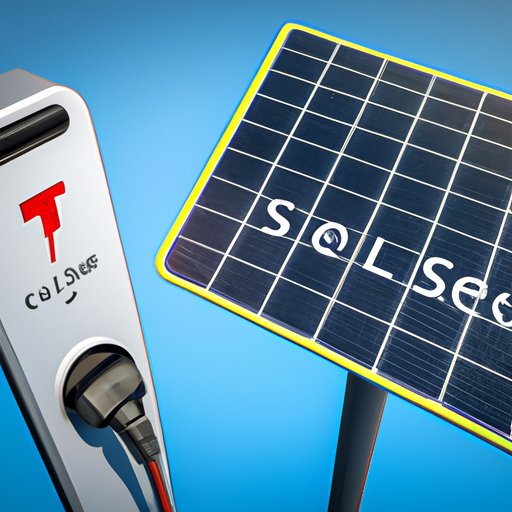Introduction
As electric vehicles become more popular, more people are considering purchasing a Tesla. One of the main questions that arise is: how much does it cost to charge a Tesla? While there is no straightforward answer to this question, as several factors can affect the final cost, this article will explore the topic and provide strategies for minimizing charging costs.
How much does it cost to charge a Tesla?
The cost of charging a Tesla largely depends on several factors, including residential electricity rates, battery size and capacity, location of charging stations, and other factors that could affect the cost.
Residential electricity rates can vary widely depending on the location. While the national average is around 13 cents per kilowatt-hour, rates can be as high as 50 cents per kilowatt-hour in some areas. Tesla estimates that it costs about $15.29 to fully charge a Model S with a 75 kWh battery, based on a national average electricity rate of 13 cents per kilowatt-hour. However, this amount can vary widely depending on the factors mentioned earlier.
Pros and Cons of owning a Tesla: Factors to consider when it comes to charging costs
When deciding whether to purchase a Tesla, it’s important to weigh the pros and cons. While owning a Tesla can lead to lower fuel costs and potential tax incentives, there are also upfront costs to consider as well as a potential need for additional charging equipment. Range anxiety, or the fear of running out of charge while driving, is also a factor for some people.
One strategy for minimizing charging costs is to schedule charging during off-peak hours, when rates are often lower. This can result in significant savings over time. Tesla also offers a feature called “Smart Charging” which can be used to schedule charging during preferred times and even adjust the charging rate when energy demand is high.
Exploring EV charging networks: Comparing pricing models and rates
Tesla has its own charging network, called the Supercharger Network, which is available to Tesla owners. The Supercharger Network charges per-kilowatt-hour rate, which varies by location, but is generally lower than the rates charged by other charging networks. Some other charging networks require a monthly subscription fee, and rates can vary widely depending on the location and charging speed.
When choosing an EV charging network, it’s important to consider the pros and cons of each from a financial perspective. Some networks may offer more convenient locations or faster charging speeds, but may also come with higher costs. Evaluating the total cost of ownership, including charging costs, can help determine which charging network is the most cost-effective.
How to calculate the cost of charging a Tesla: A step-by-step guide
To determine the cost of charging a Tesla, it’s important to have an understanding of how much energy the battery can hold, and how much energy is required to fully charge the battery from empty. The formula for calculating charging costs is:
Cost = energy (kWh) x electricity rate (per kWh)
For example, if a Tesla Model S has a 75 kWh battery and the local electricity rate is 13 cents per kilowatt-hour, the cost to fully charge the battery would be:
Cost = 75 kWh x $0.13/kWh = $9.75
To track energy usage, Tesla provides an app that allows owners to monitor charging history and energy usage. Additionally, some charging stations also provide usage data that can be used to track charging costs.
Charging a Tesla on a budget: Creative ways to save money
If charging costs are a concern, there are several creative ways to save money. Time-of-use electricity pricing can help reduce costs by charging the Tesla during off-peak hours. Some charging stations offer free charging at certain locations, such as select hotels or shopping centers. Another option is to use solar power to charge a Tesla, which can offer significant savings over time.
Understanding the true cost of owning a Tesla versus a gas-powered vehicle
While the upfront costs of purchasing a Tesla can be higher than a gas-powered vehicle, there are potential long-term savings from lower maintenance and fuel costs. In addition, Tesla provides a warranty on the battery that provides peace of mind for owners. When weighing the costs of owning a Tesla versus a gas-powered vehicle, it’s important to evaluate the total cost of ownership, including charging and maintenance costs.
Conclusion
Overall, the cost of charging a Tesla can vary widely depending on several factors, including residential electricity rates, battery size and capacity, location of charging stations, and charging network pricing models and rates. However, by following strategies such as scheduling charging during off-peak hours and tracking energy usage, it’s possible to minimize charging costs and enjoy the benefits of owning a Tesla.
